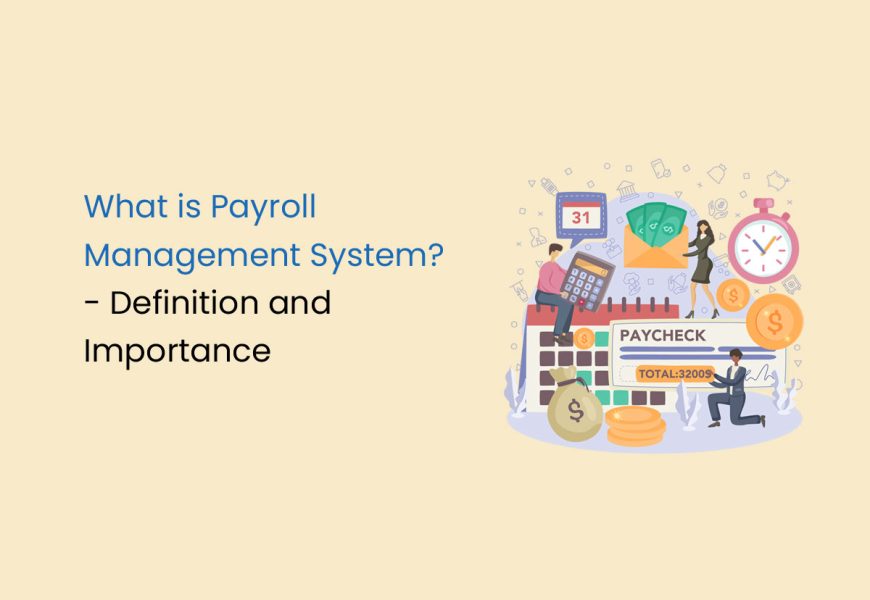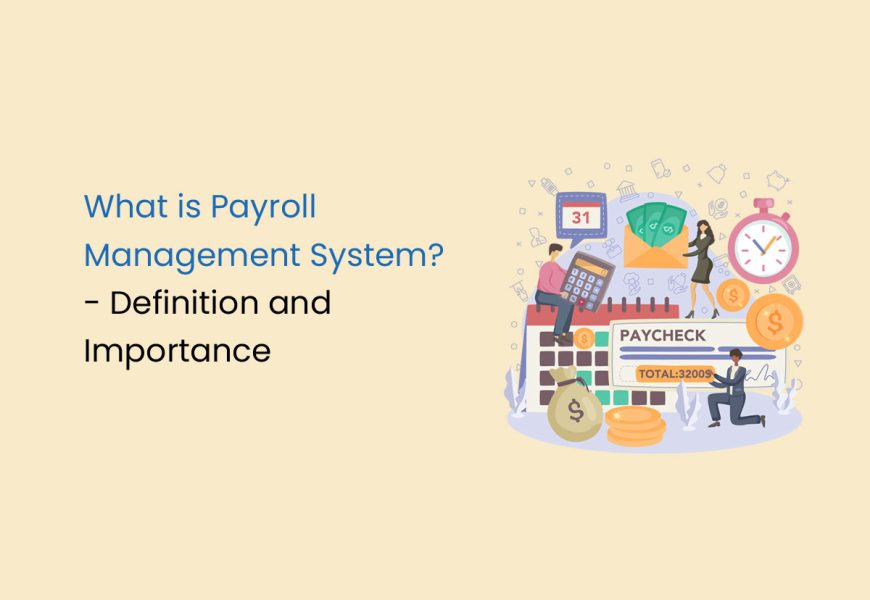
Introduction
Payroll is one of the most important business functions that ensure how pay for the employee’s service, as well as covers the needs required by the tax authority, coupled with regulation of labor. Regardless of small or big your business is, knowing how to do payroll will help as an instrument for easy transaction and productivity from the employees.
In this content, we would be covering the following: Payroll: Definition, Major constituents, Requirements for compliance, Why it becomes imperative for a business Payroll Knowhow:
Everything You Would Like to Learn About Payroll

Payroll refers to the calculation and distribution of the earning wages of an employee along with the taxes withheld accordingly. This further requires supplementations with correct maintenance of financial records. All constituents in this relate to salaries, deductions, as well as the contributions of the employers.
Payroll in HR Meaning
In Human Resources (HR), payroll is not just the salary payments but includes compliance with labor laws, record-keeping, and ensuring the fair remuneration of employees.
What Constitutes Payroll – Breaking It Down
Payroll has many elements that affect how employees get paid:
- Gross Salary – The amount of money earned before any deductions are made.
- Deductions – Income tax, social security, and insurance contributions.
- Net Salary – Take home pay after all the deductions
- Bonuses & Incentives – Bonus payments for performance.
- Overtime Pay – Additional wage for overtime work.
- Employer Contributions – The health benefits, retirement funds etc.
This prevents the organizations from payroll mistakes and legal hassles.
The Payroll Process – How It Works from Start to Finish
A flowchart shows the payroll processing:
- Data Collection of Employee – Hours, Leaves, Bonus.
- Salary Calculation – Gross salary, deduction, and net salary.
- Tax Deduction – Income tax, social security, and insurance
- Payroll – Computer-based payroll or manual
- Salary Disbursal – The salaries are given directly through direct deposits or through checks.
- Issuance of Payslip- A pay slip is issued containing the details regarding the salary statement of the employees.
- Compliance & Record Maintaining- Submission of payroll taxes and maintaining record.
An efficient payroll system means error-free and delay-free payment, and maintaining compliance for the business.
Why Payroll Is Important to Business Success
Payroll is more than salary processing. The influence of payroll can play as significant a role in the success of business. Here’s how:
- Employee Engagement & Retention- Payments that are on time and accurate make employees happier.
- Legal Compliance – Accurate payroll operation keeps penalties and audits away.
- Financial Planning- payroll expenses impact the budgeting and financial strategy in organizations.
- Business Image – A good payroll system maintains employee trust.
A well-controlled payroll system will ensure an efficient labor force and a stable business.
Payroll Compliance/Legal Aspects
Federal, State, and Local Compliance
Key Compliance Elements:
Minimum Wage Laws – Adhering to federal, regional, state, and local minimum wages.
Tax Compliance – Withholding and paying tax on time.
Overtime & Leave Policies – Payroll compliance with the legal working hours.
Payroll Record-Keeping – Record maintenance for audit purposes and employee grievances.
Non-compliance with the payroll laws might lead to some heavy fines and even legal troubles.
Manual Payroll vs. Automated Payroll Software: What’s Best for Your Business?
Manual payroll is another option from which businesses can opt for payroll, or even an automated payroll software.
Manual Payroll
Low-cost, especially for small businesses
Manual payroll is extremely time-consuming, error-prone
Compliance risks
Automated Payroll Software
Reduces time; reduces errors
Compliance risk reduced
Makes tax filings easier; reduces the number of deductions
For expanding companies, automated payroll systems are quite recommended as it saves time and minimizes the human error percentage.
Payroll Challenges and Its Solution
Despite its importance, payroll management involves challenges:
- Payroll Errors – Salary calculation errors can result in disputes.
Solution: Use payroll software with auto-calculations.
- Compliance Issues – Following the tax law changes is quite difficult.
Solution: Learn labor laws and have payroll professional onboard Employee
- Classification-Taxes will be affected in case of incorrect characterization of workers as independent contractors .
Solution: Learn contracts related to employment status and tax
- Payroll Fraud- Fictitious employees and overpayments destroys money
Solution: Have rigorous verification process of payroll Anticipated issues resolve before they occur and no payrolls interruption happens
How Small Businesses Can Payroll Effectively
The greatest hassle for a small business regarding payroll is a few tips in making it simpler:
- Investment in Payroll Software – Easy payroll work at the hands of tools like QuickBooks, Gusto, and ADP
- Outsourced Payroll Service – Compliance risk is minimized in the hands of payroll professionals.
- Maintaining current payroll records for employees- easy during audits with accurate employee data
- Schedule the payroll audit regularly- Periodical checks ensure proper payroll accuracy.
By implementing all these strategies, small businesses can run payroll operations smoothly without many hassles.
Role of Payroll in Employee Satisfaction and Retention
Payroll management plays an important role in employee satisfaction as follows:
A. Payments are made in time- If employees do not get their salaries in time, then they get unsatisfied and lack morale.
B. Clear structure of salary- employees want clear break-up of their income
C. Right tax deduction- Avoid unnecessary future tax burdens by proper tax deduction
D. Benefits & perks management- Included benefits such as health insurance, retirement plans under payroll.
When employees trust the payroll system, they feel valued, leading to higher retention rates.
Future Trends in Payroll Management
As technology advances, payroll systems are getting more complex. Key trends include:
- Cloud-Based Payroll Software – Enhances accessibility and real-time payroll tracking.
- AI-Powered Payroll Automation- eliminates human errors and speeds up the process.
- On-Demand Payroll: The employees have worked wages ready for the payday.
- Blockchain in Payroll: Payments become safer and more transparent.
- Payroll Outsourcing: More businesses are outsourcing payroll services to third-party services nowadays.
Keeping up with these trends will enable businesses to optimize their payroll management for the future.
Conclusion
Payroll is the backbone of every business, ensuring that employees are paid fairly while meeting legal obligations. Understanding what payroll is, its key components, and compliance requirements helps businesses maintain financial stability and workforce satisfaction.
Business entities are able to reduce errors and facilitate efficiency through the use of automated payroll systems and keeping abreast with trends. For any company, whether it is a startup or an established business, payroll management is a vital investment for long-term success.
Read More – The Power of Attendance Tracking Software






